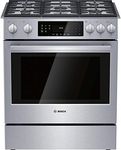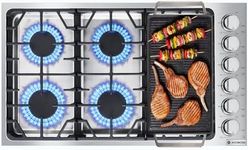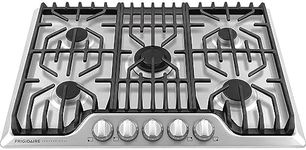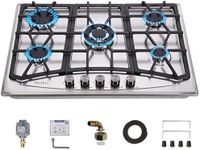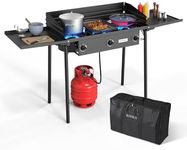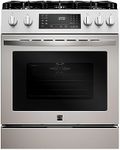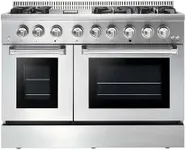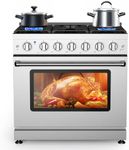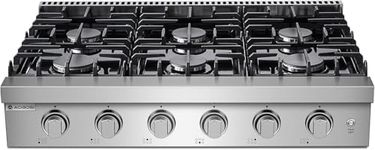Buying Guide for the Best Gas Stoves
Choosing the right gas stove can significantly enhance your cooking experience. When selecting a gas stove, it's important to consider various factors that will affect its performance, efficiency, and suitability for your kitchen. Understanding the key specifications will help you make an informed decision that best fits your cooking needs and lifestyle.Number of BurnersThe number of burners on a gas stove determines how many pots or pans you can use simultaneously. This is important because it affects your cooking efficiency and convenience. Gas stoves typically come with 2, 3, 4, or even more burners. If you have a small family or limited kitchen space, a 2-burner stove might be sufficient. For larger families or those who enjoy cooking multiple dishes at once, a 3 or 4-burner stove would be more suitable. Consider your cooking habits and the number of dishes you usually prepare at the same time to choose the right number of burners.
Burner MaterialBurner material affects the durability and heat distribution of the gas stove. Common materials include brass and aluminum. Brass burners are more durable and provide better heat distribution, making them ideal for heavy and frequent cooking. Aluminum burners are lighter and heat up quickly but may not last as long as brass. If you cook often and need a stove that can withstand heavy use, opt for brass burners. For occasional cooking, aluminum burners can be a cost-effective choice.
Ignition TypeIgnition type refers to how the gas stove is lit. There are two main types: manual and automatic ignition. Manual ignition requires a matchstick or lighter to ignite the burner, while automatic ignition uses a built-in spark mechanism that lights the burner with a simple turn of the knob. Automatic ignition is more convenient and safer, especially for those who prefer a hassle-free cooking experience. If you prioritize ease of use and safety, choose a gas stove with automatic ignition.
Size and DimensionsThe size and dimensions of the gas stove are crucial for ensuring it fits well in your kitchen space. Measure the available countertop space where you plan to place the stove and compare it with the dimensions of the gas stove. Gas stoves come in various sizes, so it's important to choose one that fits comfortably without overcrowding your kitchen. If you have a compact kitchen, a smaller stove with fewer burners might be more appropriate. For larger kitchens, you can opt for a bigger stove with more burners.
Safety FeaturesSafety features are essential for preventing accidents and ensuring safe operation of the gas stove. Look for features such as flame failure protection, which automatically shuts off the gas supply if the flame goes out, and child lock functions to prevent accidental ignition. These features are particularly important if you have children or elderly family members at home. Prioritize gas stoves with robust safety features to ensure a secure cooking environment.
Ease of CleaningEase of cleaning is an important consideration for maintaining hygiene and convenience. Gas stoves with removable burner parts and smooth surfaces are easier to clean. Stainless steel and glass tops are popular choices as they are easy to wipe down and maintain. If you cook frequently and want to minimize cleaning time, choose a gas stove with features that facilitate easy cleaning, such as spill-proof designs and detachable components.
Brand and WarrantyThe brand and warranty of a gas stove can indicate its reliability and the level of customer support you can expect. Reputable brands often offer better quality products and reliable after-sales service. A good warranty provides peace of mind and protection against manufacturing defects. When choosing a gas stove, consider well-known brands with positive reviews and a comprehensive warranty to ensure long-term satisfaction and support.
